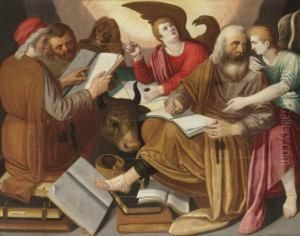Leonardus Neyts Paintings
Leonardus Neyts, also known as Leonard Neyts or Lenaert Neijts, was a Flemish painter, draughtsman and engraver primarily known for his landscapes and rural scenes. Born in 1620 in Ghent, then part of the Spanish Netherlands, Neyts’s artistic journey began in his homeland, where he was influenced by the rich artistic traditions of the Flemish region.
Neyts received his early training in the studio of local Ghent painter Lucas de Heere. His style was further shaped by the Flemish tradition of landscape painting, which was characterized by meticulous attention to detail and a harmonious interplay between nature and human figures. Not much is known about his travels, but it is assumed that he may have visited Italy, as some of his works exhibit an Italianate influence, a common trend among Northern European artists of the time who sought inspiration from the Renaissance masters.
Throughout his career, Neyts developed a reputation for his small-scale landscapes, which often featured scenes of rivers, villages, and pastoral activities, populated with figures and animals that lend a lively character to his compositions. His works are noted for their serene atmospheres and fine detail, and he was adept at capturing the changing effects of light and weather in his scenes.
Neyts's contribution to the world of printmaking was also significant. He produced several engravings that helped disseminate his and other artists' works more broadly. His engravings are valued for their technical proficiency and artistic quality, contributing to his standing among his contemporaries.
Leonardus Neyts passed away in 1681, leaving behind a body of work that, while not as widely known as some of his contemporaries, reflects the skill and aesthetic sensibilities of the Flemish landscape tradition during the 17th century. Today, his works can be found in various art collections and museums, offering insights into the rural life and landscape perceptions of his time.
